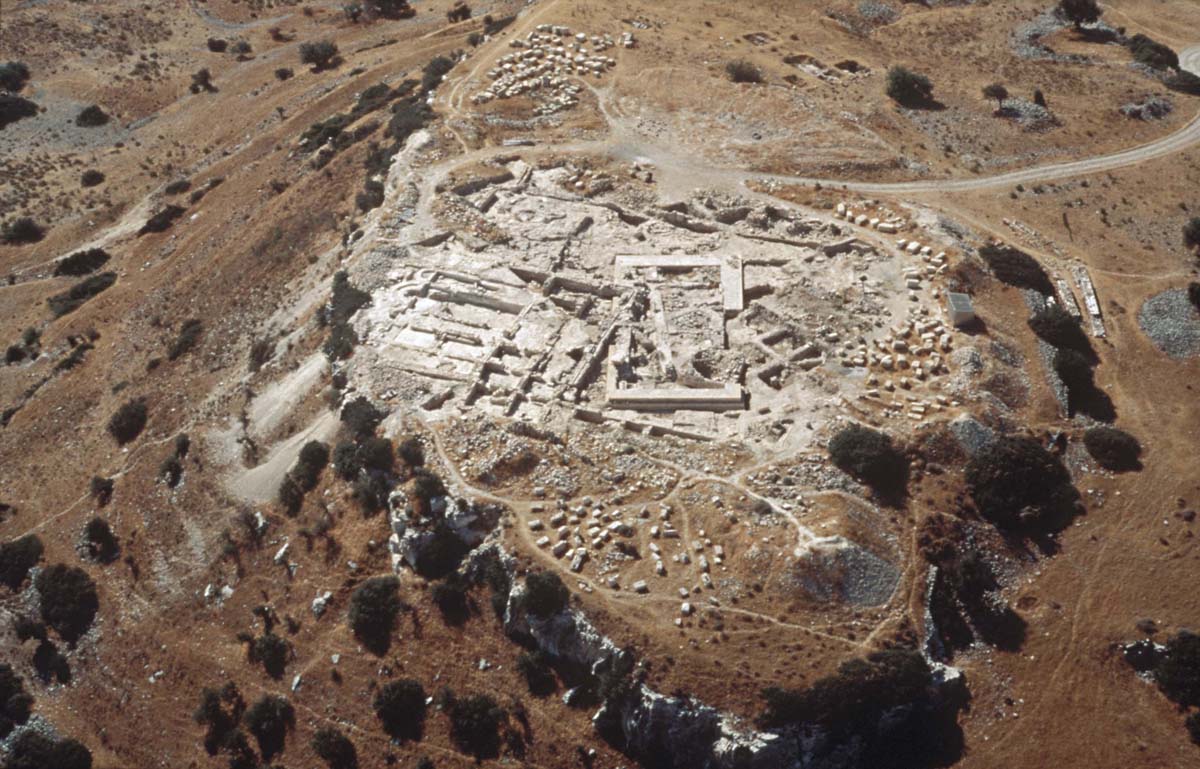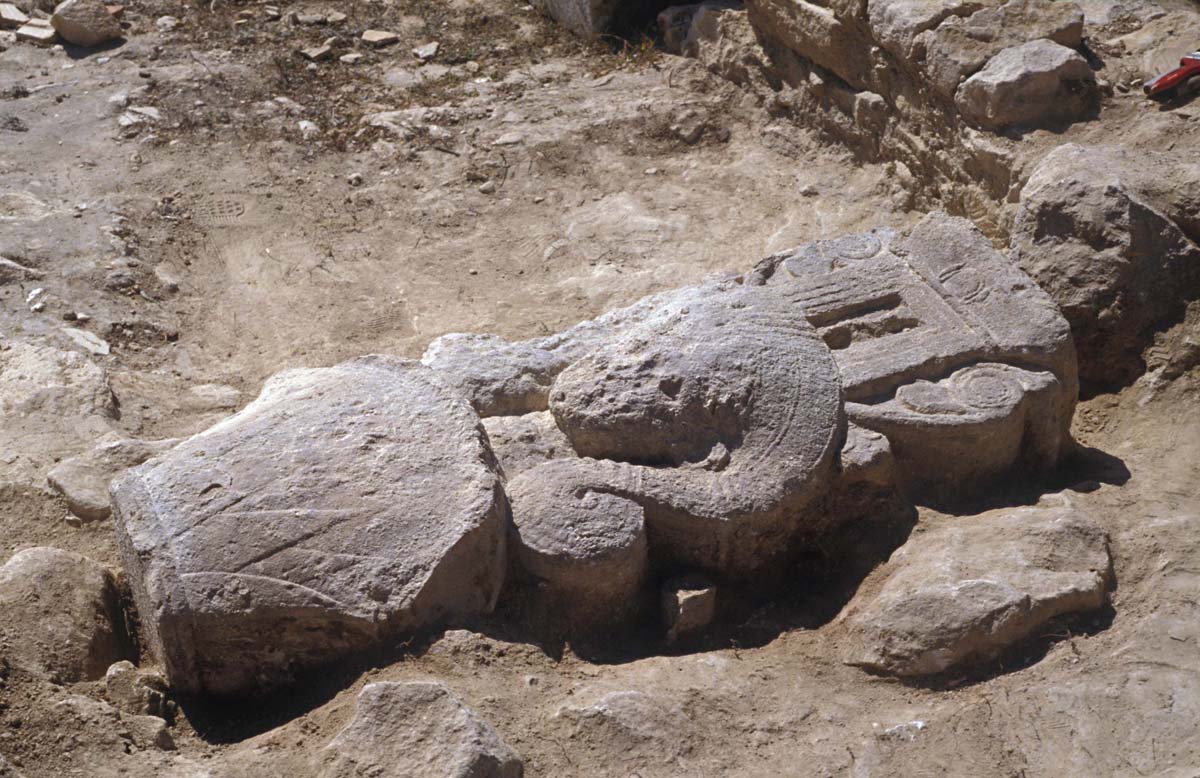The presence of a colossal stone vase practically intact (in the Louvre since 1866) has attracted the attention of scholars to the upper part of the acropolis of Amathus and it was not until in 1976 that this area of the ancient city began to be explored scientifically. The discovery in 1979 of two dedications by Androkles of Amathus, the last local king, to the “Cypriote” (Kypria) and to “Cypriote Aphrodite” allows us to establish with certainty that this location was the site of the sanctuary of the great local goddess, and as her name indicates, goddess of Cyprus in general.

Aerial view of the remains, 1991 (P. Aupert / Archives EFA, Y.1522)
The same year the unearthing of an important deposit of ceramics attests to the fact that the cult dates back to at least the 8th century BC. Nevertheless, an even older settlement that predates it by approximately two centuries, albeit with very limited remains, is testified by a tomb located on the highest point of the hill. Subsequently, the excavations enabled us to understand the evolution of the sanctuary and better grasp the personality of the goddess, likened to Egyptian Hathor of 6th century BC then associated with Sarapis and Isis, the great divinities of the Lagid dynasty, during the era of Ptolemaic rule.

Hathoric stela reused in an Early Christian wall, 1987 (A. Hermary / Archives EFA, Y.1042)
Architectural structures remained modest until the end of Hellenistic period yet we know from a text in the hand of the Latin historian Tacitus that the sanctuary was regarded at the onset of the Roman imperial period as one of the three most important of Cyprus along with those of Palaepaphos and Salamis. Constructed at the end of ca. 1st century AD, the monumental temple was transformed into a church when the pagan cults vanished, then it was razed towards the end of the 6th century AD and much of the stone was reused to build a small Christian basilica. The monolithic stone vase displayed in the Louvre and the one which remained in situ in a poor state of preservation are thus the only visible vestiges of the sanctuary of Aphrodite. The site was abandoned definitively shortly after the Arab invasions of the mid-7th century AD.
A. Hermary, trans. A.M. Schroth-Daskalakis
